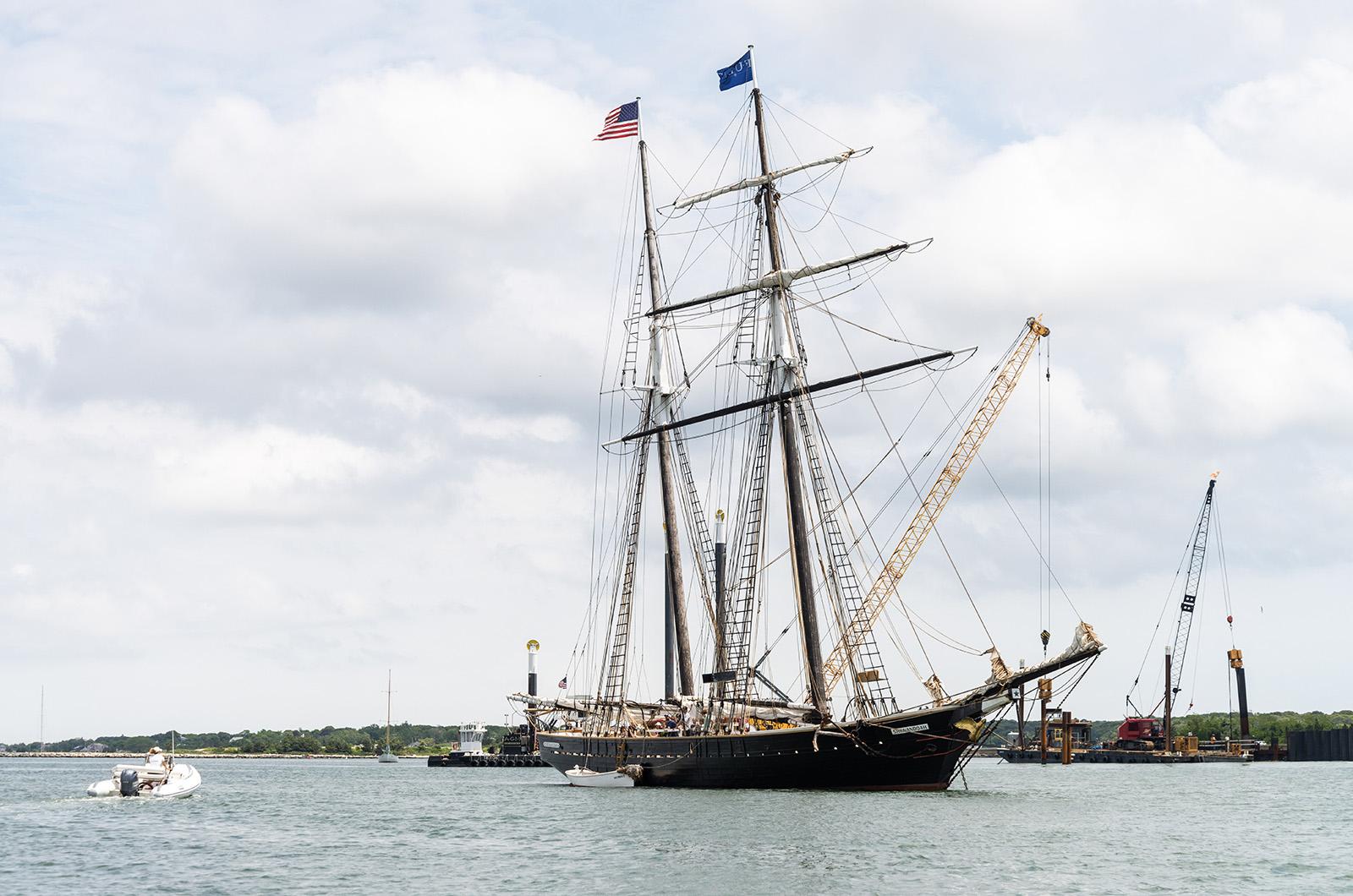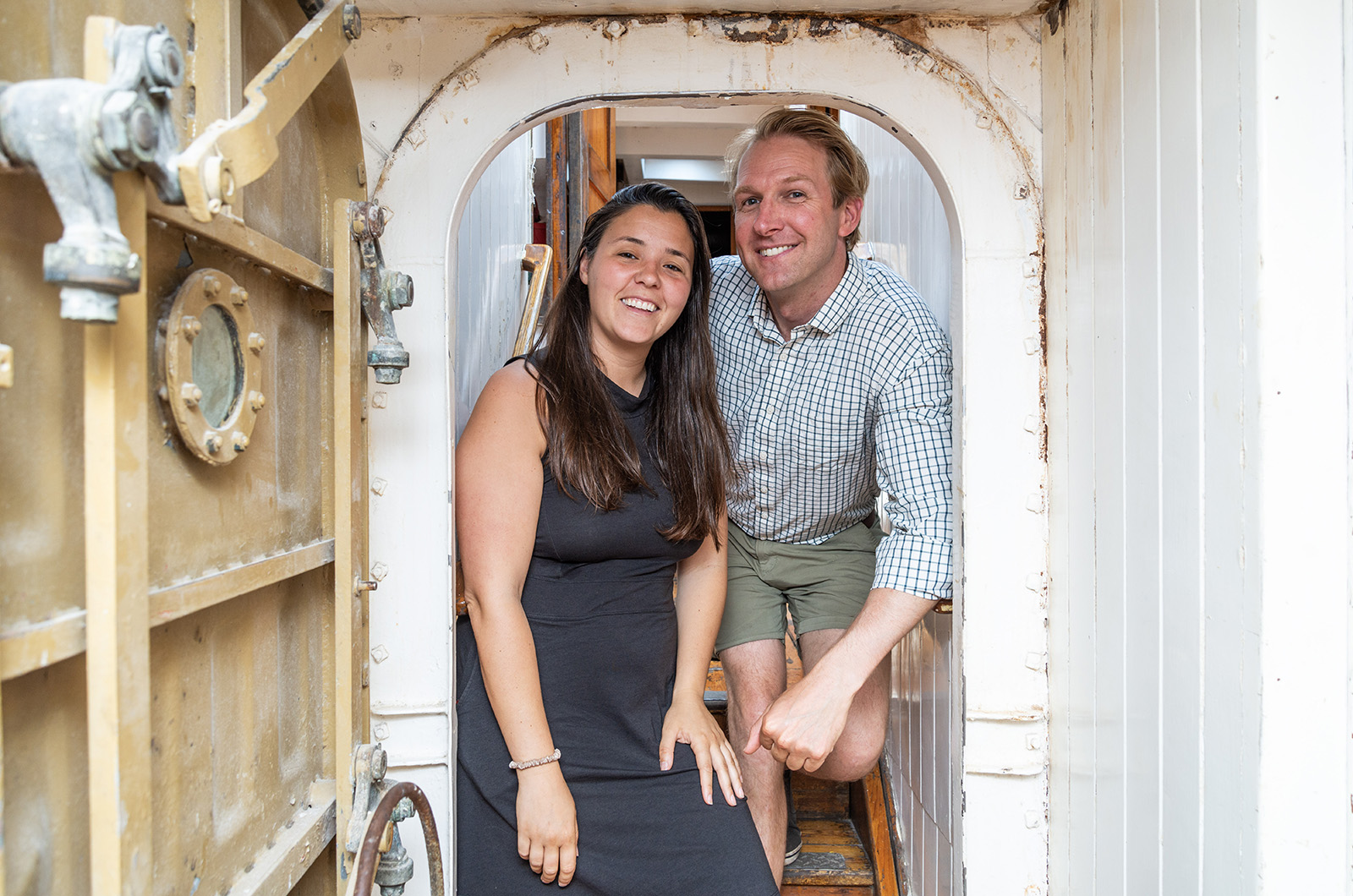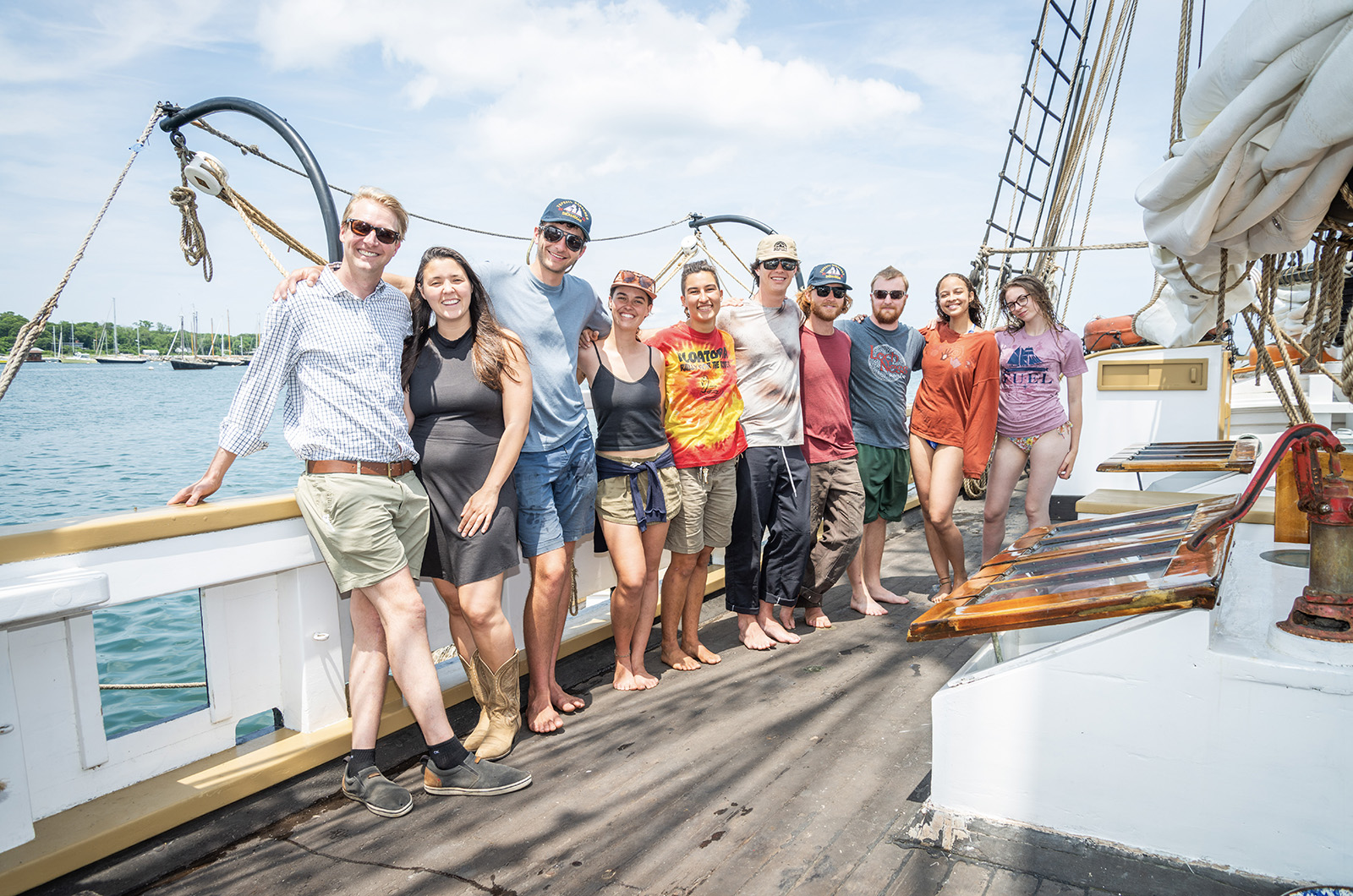Stepping onto the tall ship Shenandoah is stepping into another world. Stairs become ladders, a hand pump replaces faucets and tables sway to stay level as the boat tilts.
The ship has long been a fixture in Vineyard Haven harbor, but its current captains are working to give those who step aboard a new experience.
Ian Ridgeway and Casey Blum founded Martha’s Vineyard Ocean Academy (formerly known as FUEL, or Foundation for Underway Experiential Learning) in 2016. They both chuckled while Mr. Ridgeway explained why they recently decided to change the name.
“We liked the metaphor of FUEL, but it was confusing to people,” he said. “They were like, ‘I don’t get it. Fuel is what you put in your gas tank.’”
The pair became captains of the Shenandoah in 2020, when the boat’s designer and former owner of 56 years, Capt. Robert S. Douglas, donated the ship to the program.
Mr. Ridgeway first boarded the Shenandoah as a fifth grader in 1995 while growing up on the Vineyard. A long tradition, begun by Captain Douglas and continuing today, takes Island school children on board for a weeklong excursion at the end of fifth or sixth grade, and also provides weeklong trips throughout the summer for kids.
Mr. Ridgeway’s childhood experience proved so influential that even after he moved off-Island, he never stopped returning to the tall ships as a child. Over the years he worked his way up to crew member and then eventually became a captain.
“Coming out on the boat was like a game changer for me,” he said. “It was like a place where everything made sense all of a sudden.”
In 1999, Ms. Blum first boarded the Alabama, a sister ship to the Shenandoah that today is still run by Captain Douglas. She was nine years old at the time. In 2014, she became the first woman to captain the boat.
Ms. Blum was in graduate school, getting master’s degrees in outdoor education and social work, when she co-founded FUEL with Mr. Ridgeway. The two captains are looking to change more than just the program name, as they seek to help the program evolve with the times.
Sailing on Shenandoah has previously meant learning maritime skills, which encompasses two aspects of experiential learning: being challenged and in a novel environment.
“What’s new in the programming is the reflection piece, which is the third key area of experiential learning — taking the time to reflect on your experiences either through journaling or through group discussions,” Mr. Ridgeway said.
The day to day activities, Mr. Ridgeway said, focus on three pillars — environmental stewardship, mariner competency and personal development.
The programming, they added, is informed and shaped by real data. Children who participate in the program are asked to take retrospective surveys after the conclusion of the sailing trip, part of a study with the University of New Hampshire.
After two summers and 430 surveys, Ms. Blum and Mr. Ridgeway said they were recently given the go-ahead to expand their study for another summer. Ms. Blum said that she sees Martha’s Vineyard Ocean Academy as part of solving a mental and behavioral health crisis for adolescents in America. She wants it to be a preventative approach to the problem.
“It’s really about trying to meet the needs of the youth in our world today,” Ms. Blum said. “This positive youth development model is proven to actually help kids develop resistance to the later onset of mental and behavioral health disorders.”
Aboard Shenandoah, even small things like getting water, cleaning decks or polishing brass present opportunities for problem solving. Constantly overcoming those small challenges can build confidence and a sense of independence in someone new to the ship. For many kids, a voyage can be the first time they are away from their cellphones and screens, another challenge for children today whose social connections are often formed and maintained online through social media, Ms. Blum said.
“I feel like they’re growing up in such a digital virtual world nowadays,” she said. “It’s just such an authentic connection that happens out here because you can’t avoid people. If there’s conflict you have to address it, and if there’s joyful moments everybody feels those.”
Alongside programming changes, Mr. Ridgeway said they began a local food initiative and have implemented sliding scale tuition, allowing families to pay what they can.
“Our goal with that is to not turn a single family away due to cost, which we’ve been successfully able to do,” Mr. Ridgeway said.
The boat also gives new opportunities to its staff members, like Kyra Whalen, an educator at the Chilmark School. Ms. Whalen grew up on the Vineyard and first stayed on the Shenandoah a few years ago as a chaperon during the annual fifth grade trip.
What she experienced made her think about education in a new way, and how it can take place outside the classroom.
“I saw some of the hardest kids in my class, the most challenging kids in
my class become completely different kids,” she said. “And maybe they’re not learning math or science or social studies, but they’re learning to be people.”
She joined the ship’s staff this summer as a voyage guide.
Mr. Ridgeway also pointed to the increased attention on staff development with weekly training sessions about topics including lifeguarding, shipboard first aid and how to be role models for young children.
These changes could also help Mr. Ridgeway and Ms. Blum achieve another goal — accreditation by the Association for Experiential Education.
“That’s basically the gold standard of outdoor education,” Mr. Ridgeway said. “We’re really trying to make sure that we’re following all the best practices and giving the best possible programming.”
The process can take many years, but if achieved the Martha’s Vineyard Ocean Academy would be the first shipboard program in the world to be accredited by the organization, he said.
As the organization enters a new chapter, Mr. Ridgeway and Ms. Blum want people to know that their goal is to bring the unique, magical experience of the Shenandoah into the 21st century while preserving what makes it so special.
Looking to the future, Mr. Ridgeway and Ms. Blum have another obstacle to face — at about 60 years old, the Shenandoah needs to be rebuilt, and they are in the middle of a fundraising campaign.
Learning about the water, Mr. Ridgeway said, is part of understanding the history and landscape of the Island. He sees the program as a way to teach children that the water doesn’t have to be a barrier that keeps them from getting somewhere.
“If you learn how to exist on it, if you learn the skills and arts of mariners, you can benefit from that barrier,” he said. “It can become connective tissue instead.”










Comments (3)
Comments
Comment policy »